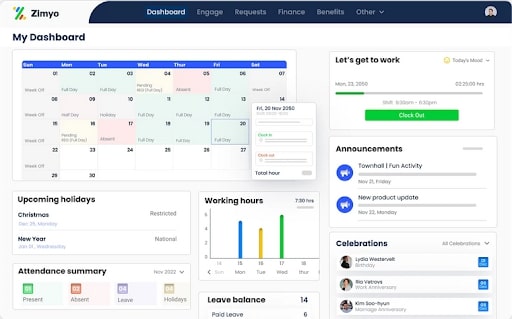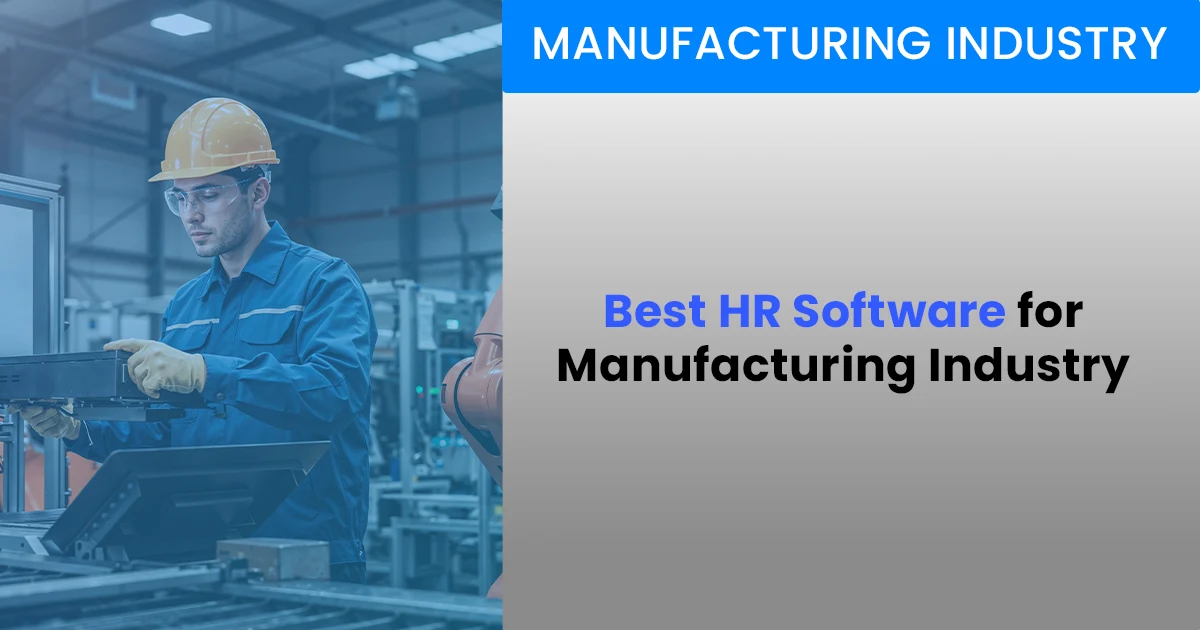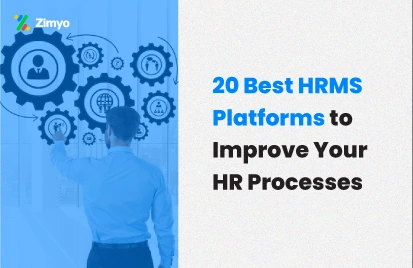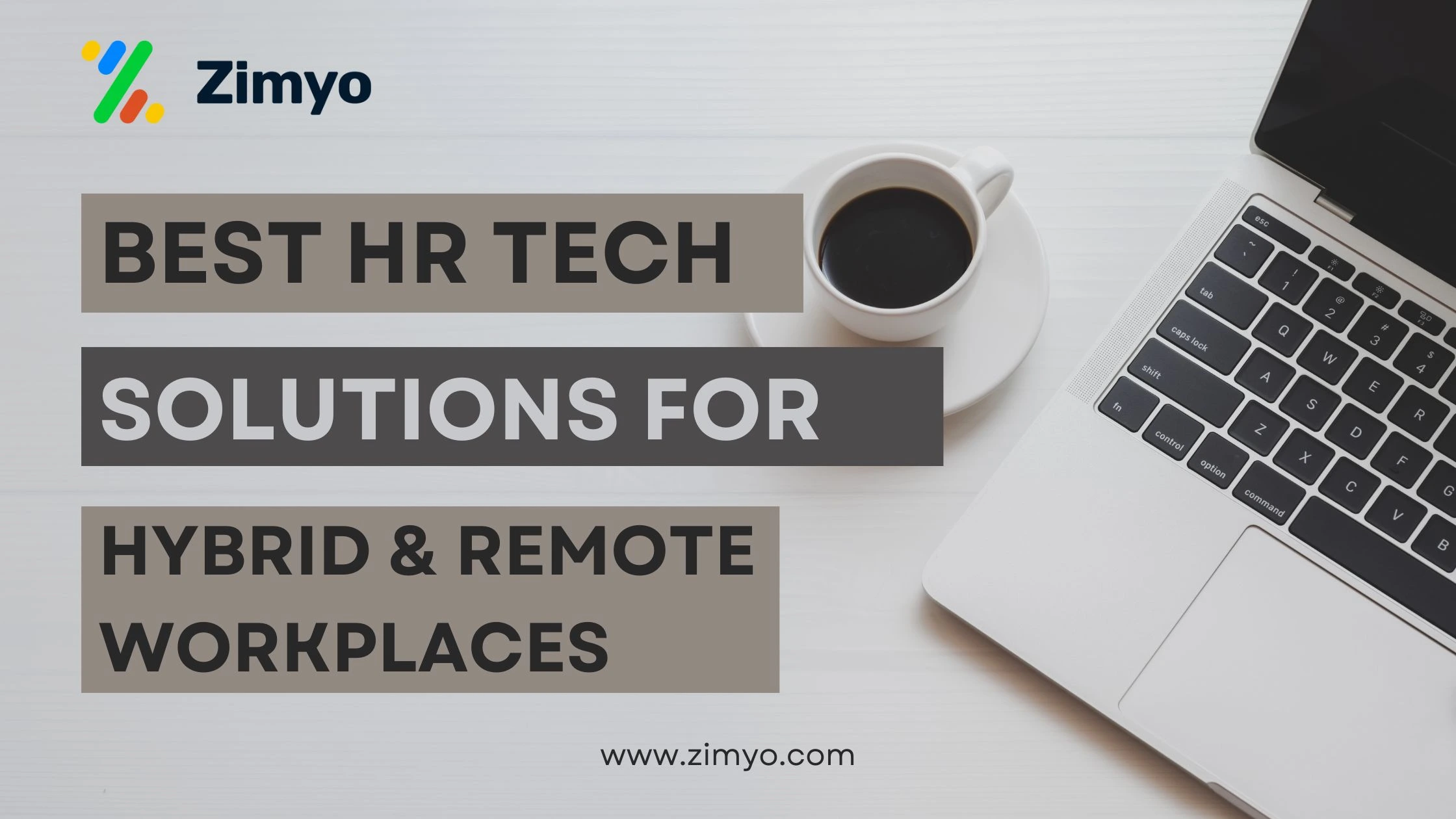HR software is a powerful tool designed to make HR tasks more accessible and more efficient. It is a one-stop solution for managing employee-related information, policies, and procedures. With its user-friendly interface, HR software helps HR professionals easily handle administrative tasks. It offers various features and modules covering different aspects of HR management.
For example, it centralizes employee data, including personal details, employment history, and performance records, so HR professionals can access accurate information whenever needed. Additionally, the software simplifies the recruitment process by automating job postings, application tracking, interview scheduling, and candidate management. Hr software saves time, ensures a structured hiring process, and organizes the overall experience.
Features of HR Software
- Centralize Employee Data: Store and manage employee information securely in one place-no more than sifting through files or spreadsheets.
- Smooth Onboarding & Offboarding: Welcome new hires seamlessly and ensure smooth exits for departing employees. Make transitions a breeze.
- Track Time & Attendance: Say goodbye to timesheets and punch cards. Monitor attendance, manage schedules, and generate accurate reports effortlessly.
- Ensure Payroll Accuracy: Integrate with payroll software for accurate wage calculations and deductions, and generate error-free payroll reports.
- Stay Compliant & Generate Reports: Simplify compliance with automated report generation. Stay on top of regulations effortlessly.
The Different Types of HR Software
Human Resource Management System (HRMS):
Human Resource Management System (HRMS) is a software solution that helps businesses manage the tasks and processes related to the human resources department. It provides a centralized platform for storing and organizing employee information such as personal details, employment history, performance records, and benefits. HR Software enables businesses to streamline HR tasks such as employee onboarding, attendance tracking, leave management, payroll processing, performance appraisals, and training management. It simplifies and automates various HR processes, making it easier for organizations to manage their workforce effectively and efficiently.
Benefits:
- Streamlining HR processes and reducing administrative tasks, freeing up HR professionals’ time.
- Increased accuracy and efficiency in payroll processing, ensuring timely and accurate payments.
Let’s see an example that shows the appearance of Zimyo HRMS Software.

Human Resource Information System (HRIS)
Human resource information system (HRIS) is a software tool that helps organizations manage and store essential employee information and human resource-related data. It is a centralized database that holds employee records, payroll information, benefits, attendance, performance appraisals, and training records. HRIS provides a convenient and efficient way to access and manage this information, making HR tasks such as employee data management, reporting, and analysis more manageable and streamlined. HRIS is a system that helps businesses organize and maintain critical HR data in one place, simplify HR processes, and enhance decision-making.
Benefits:
- Efficient data management and easy access to employee information, improving HR productivity.
- Streamlined reporting and analysis for data-driven decision-making.
Human Capital Management (HCM)
Human capital management refers to a strategic approach to managing and optimizing human resources within an organization. It includes practices and procedures to achieve, develop, and maintain a skilled and motivated workforce. HCM covers recruiting, onboarding, training, performance management, compensation, and career development. HCM aims to align an organization’s human resources with its strategic objectives, ensure the right people are in the right roles, and enable their growth and productivity. Simply put, HCM focuses on maximizing employees’ value and potential to drive the organization’s success.
Benefits:
- Better talent acquisition and retention strategy for a skilled workforce.
- Enhanced workforce planning and development, promoting corporate growth.
Applicant Tracking System (ATS)
Applicant Tracking System is a software tool companies use to streamline and automate hiring new employees. It helps employers manage job applications, track candidates, and streamline their hiring workflow in one centralized system. ATS simplifies hiring by collecting resumes, filtering applications based on specific criteria, scheduling interviews, and facilitating communication between recruiters and applicants. Overall, ATS makes it easier for companies to find and hire suitable candidates efficiently.
Benefits:
- Efficient and organized candidate management, saving time in the recruitment process.
- Improving the quality of hiring through better candidate screening and selection.
Payroll System
A payroll system is a simple and efficient way of managing employee salaries, wages, and other financial aspects related to compensation. It automates calculating and distributing employee payments, ensuring accurate and timely payroll processing. The system helps organizations track hours worked, deductions, taxes, and benefits, simplifies payroll management, and ensures employees are paid accurately and on time.
Let’s see an example that shows the appearance Zimyo Payroll Software.

Conclusion
HR software offers a range of features and modules that simplify and streamline various HR tasks. It centralizes employee data, facilitates smooth onboarding and offboarding processes, tracks time and attendance, integrates with payroll systems, and helps organizations stay compliant and generate reports. The different types of HR software include Human Resource Management Systems, Human Resource Information Systems, Human Capital Management, Applicant Tracking Systems, and Payroll Systems.
HRMS provides a centralized platform for managing employee information and streamlining HR processes such as onboarding, attendance tracking, leave management, payroll processing, performance appraisals, and training management. HRIS is a centralized database for storing and accessing employee records, payroll information, benefits, attendance, and more, simplifying data management and enabling reporting and analysis. HCM takes a strategic approach to optimizing human resources, focusing on talent acquisition, retention, workforce planning, and development. ATS automates and streamlines the hiring process, making it easier for employers to manage job applications, track candidates, and facilitate communication. Payroll systems automate payroll processing, ensuring accurate and timely payments while simplifying compliance with tax rules.




